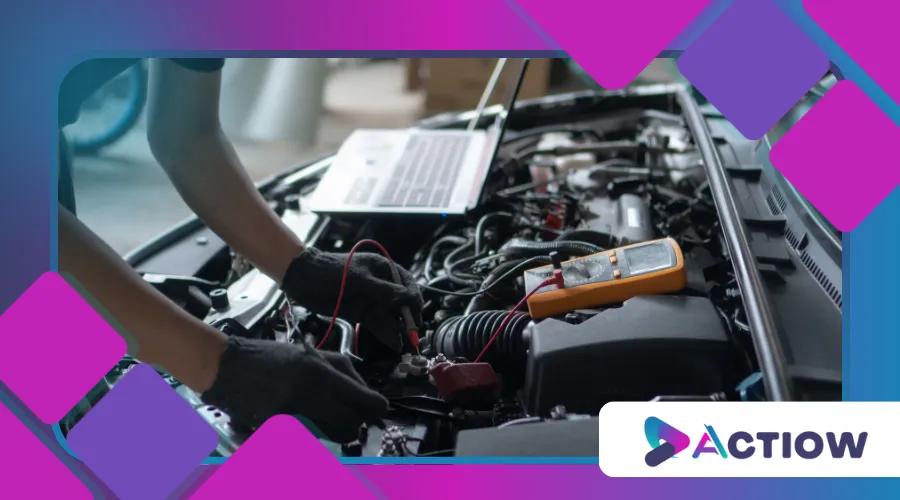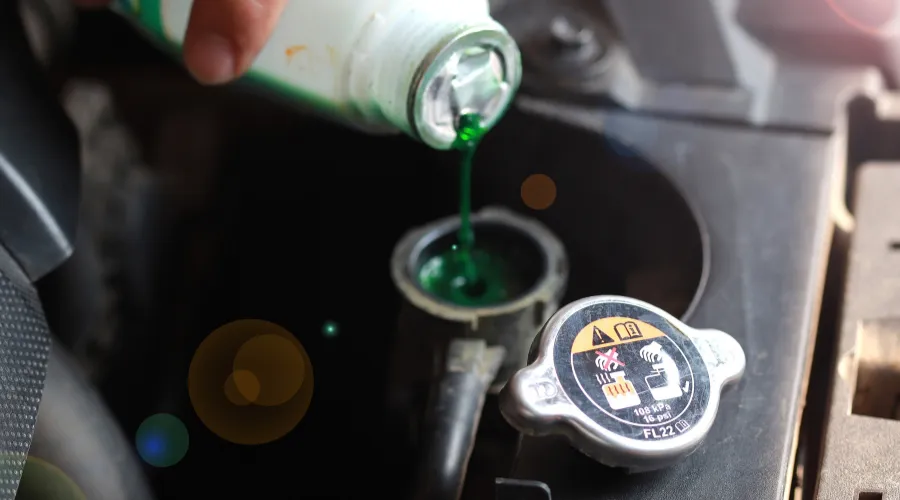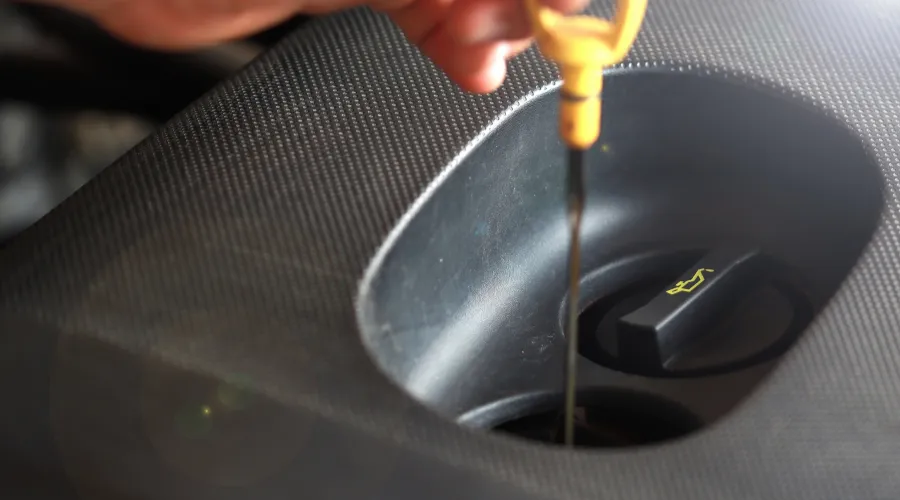Preventive Maintenance: What to Do Every 10,000 km?

Anúncios
Keeping your car in top shape isn’t just about fixing problems when they arise—it’s about preventing them in the first place.
Preventive maintenance is the key to ensuring your vehicle runs smoothly, lasts longer, and avoids costly repairs down the road.
But what exactly should you do every 10,000 km to keep your car in peak condition?
Anúncios
Let’s dive into the essential steps every driver should know.
Regular maintenance not only enhances your car’s performance but also contributes to a safer driving experience.
By being proactive, you can avoid unexpected breakdowns and enjoy peace of mind on the road.
Why Preventive Maintenance Matters
Regular preventive maintenance is like a health check-up for your car.
It helps identify potential issues before they become major problems, saving you time, money, and stress.
According to a study by the Car Care Council, 77% of cars on the road need maintenance or repairs.
Ignoring these needs can lead to breakdowns, reduced fuel efficiency, and even safety hazards.
Moreover, regular maintenance can improve your car’s resale value.
A well-maintained vehicle is more appealing to potential buyers, making it a smart investment for the future.
The Essential 10,000 km Maintenance Checklist
1. Oil and Filter Change: The Lifeblood of Your Engine
Engine oil lubricates moving parts, reduces friction, and prevents overheating.
Over time, oil breaks down and becomes contaminated with dirt and debris.
Changing the oil and filter every 10,000 km ensures your engine runs smoothly and efficiently.
Synthetic oils, in particular, offer better performance and longevity.
Regular oil changes can also improve fuel efficiency, as clean oil allows the engine to operate more effectively.
Additionally, neglecting oil changes can lead to severe engine damage, resulting in costly repairs.
2. Tire Rotation and Inspection
Tires wear unevenly due to factors like weight distribution and driving habits.
Rotating them every 10,000 km promotes even wear, extends their lifespan, and improves traction.
While you’re at it, check the tire pressure and tread depth to ensure optimal safety and performance.
Properly inflated tires not only enhance fuel efficiency but also contribute to better handling on the road.
Ignoring tire maintenance can lead to blowouts or decreased performance, especially in adverse weather conditions.
3. Brake System Check
Your brakes are your first line of defense on the road.
Inspect the brake pads, rotors, and fluid levels to ensure they’re in good condition.
Worn-out brakes can compromise stopping power and put you at risk.
Regular checks can prevent more severe issues, such as brake failure, which can occur if neglected.
Additionally, maintaining your brake system enhances overall driving safety, giving you confidence behind the wheel.
4. Air Filter Replacement
A clean air filter improves engine performance and fuel efficiency by allowing proper airflow.
Replacing it every 10,000 km prevents dirt and debris from entering the engine, which can cause damage over time.
A clogged air filter can lead to reduced acceleration and increased fuel consumption.
Moreover, a clean air filter contributes to better air quality within the vehicle, benefiting all passengers.
This simple task can significantly enhance your driving experience by ensuring optimal engine performance.

5. Fluid Top-Ups and Inspections
Your car relies on various fluids to function properly, including coolant, transmission fluid, and windshield washer fluid.
Check and top them up as needed to prevent overheating, ensure smooth gear shifts, and maintain visibility.
Neglecting fluid levels can lead to serious mechanical failures, potentially leaving you stranded.
Regular inspections help identify leaks early, allowing for timely repairs and avoiding costly damage.
Maintaining proper fluid levels is essential for the longevity of your vehicle’s components.
+ How to Wash Your Car Properly Without Scratching the Paint
6. Battery Health Check
A weak or dying battery can leave you stranded.
Inspect the battery terminals for corrosion and ensure the connections are secure.
If your battery is more than three years old, consider testing its charge capacity.
Regular checks can help you avoid unexpected breakdowns and ensure reliable starting power.
Additionally, maintaining your battery can prevent damage to your vehicle’s electrical system, which can be costly to repair.
7. Suspension and Alignment
Your car’s suspension system absorbs shocks and provides a smooth ride.
Inspect the shocks, struts, and alignment every 10,000 km to prevent uneven tire wear and improve handling.
Proper alignment enhances fuel efficiency and prolongs the life of your tires.
Additionally, a well-maintained suspension system ensures better stability and control, especially during sharp turns or sudden stops.
Ignoring suspension issues can lead to a bumpy ride and increased wear on other components.
8. Lights and Wipers
Ensure all lights—headlights, brake lights, and turn signals—are functioning properly.
Replace worn-out wiper blades to maintain visibility during rain or snow.
Proper lighting is crucial for safe driving, especially at night or in poor weather conditions.
Additionally, functioning wipers help ensure clear visibility, reducing the risk of accidents.
Regular checks can prevent last-minute replacements when you need them most.

The Benefits of Sticking to a Maintenance Schedule
Regular preventive maintenance offers numerous advantages:
- Cost Savings: Addressing minor issues early prevents expensive repairs later.
- Improved Safety: A well-maintained car is less likely to break down or malfunction.
- Better Fuel Efficiency: Properly tuned engines and inflated tires reduce fuel consumption.
- Higher Resale Value: A well-documented maintenance history increases your car’s appeal to potential buyers.
Additionally, sticking to a maintenance schedule can enhance your overall driving experience.
You’ll enjoy a smoother ride and increased reliability, making every journey more enjoyable.
++ 10 Tips to Keep Your Car Looking New for Longer
Common Mistakes to Avoid
Even the most diligent car owners can make mistakes.
Here are some pitfalls to watch out for:
- Skipping the Owner’s Manual: Your car’s manual provides specific maintenance guidelines tailored to your vehicle.
Ignoring it can lead to unnecessary repairs.
- Overlooking Warning Signs: Strange noises, warning lights, or changes in performance should never be ignored.
Addressing these signs early can prevent bigger problems down the line.
- Using Low-Quality Parts: Cutting corners on parts and fluids can compromise your car’s performance and longevity.
Investing in quality components ensures that your vehicle remains in optimal condition.
Tables: Maintenance Tasks and Their Benefits
| Maintenance Task | Frequency | Benefits |
|---|---|---|
| Oil and filter change | Every 10,000 km | Improves engine performance and longevity |
| Tire rotation | Every 10,000 km | Promotes even tire wear |
| Brake inspection | Every 10,000 km | Ensures safety and stopping power |
| Air filter replacement | Every 10,000 km | Enhances fuel efficiency |
| Fluid Type | Purpose | Check Frequency |
|---|---|---|
| Engine oil | Lubricates engine parts | Every 10,000 km |
| Coolant | Prevents overheating | Every 10,000 km |
| Transmission fluid | Ensures smooth gear shifts | Every 20,000 km |
| Windshield washer fluid | Maintains visibility | As needed |
The Role of Technology in Preventive Maintenance
Modern cars are equipped with advanced systems that make preventive maintenance easier than ever.
Many vehicles feature onboard diagnostics that alert you to potential issues, while smartphone apps can track maintenance schedules and provide reminders.
Embracing these tools can help you stay on top of your car’s needs.
For instance, some apps allow you to log service history and set reminders for upcoming maintenance tasks.
This technology not only simplifies the process but also promotes a proactive approach to vehicle care.
DIY vs. Professional Maintenance: What’s Best?
While some tasks, like checking tire pressure or replacing wiper blades, can be done at home, others require professional expertise.
Mechanics have the tools and knowledge to perform thorough inspections and complex repairs.
Deciding between DIY and professional maintenance depends on your skills, time, and the complexity of the task.
For example, while changing oil is a manageable task for many, brake repairs may require specialized tools and training.
Knowing your limits is crucial for ensuring your vehicle remains in optimal condition.
Conclusion: The Road to Longevity
Preventive maintenance is the cornerstone of car ownership.
By following a 10,000 km maintenance schedule, you’re not just keeping your car running—you’re ensuring it remains safe, efficient, and reliable for years to come.
Whether you’re a seasoned driver or a new car owner, taking these steps will pay off in the long run.
Remember, your car is more than just a mode of transportation—it’s an investment.
Treat it with care, and it will take you wherever you need to go, mile after mile.
By adhering to a consistent preventive maintenance routine, you’re not only safeguarding your vehicle but also enhancing your driving experience.
So, the next time your odometer hits that 10,000 km mark, don’t delay—give your car the attention it deserves.
After all, a well-maintained car is a happy car.
